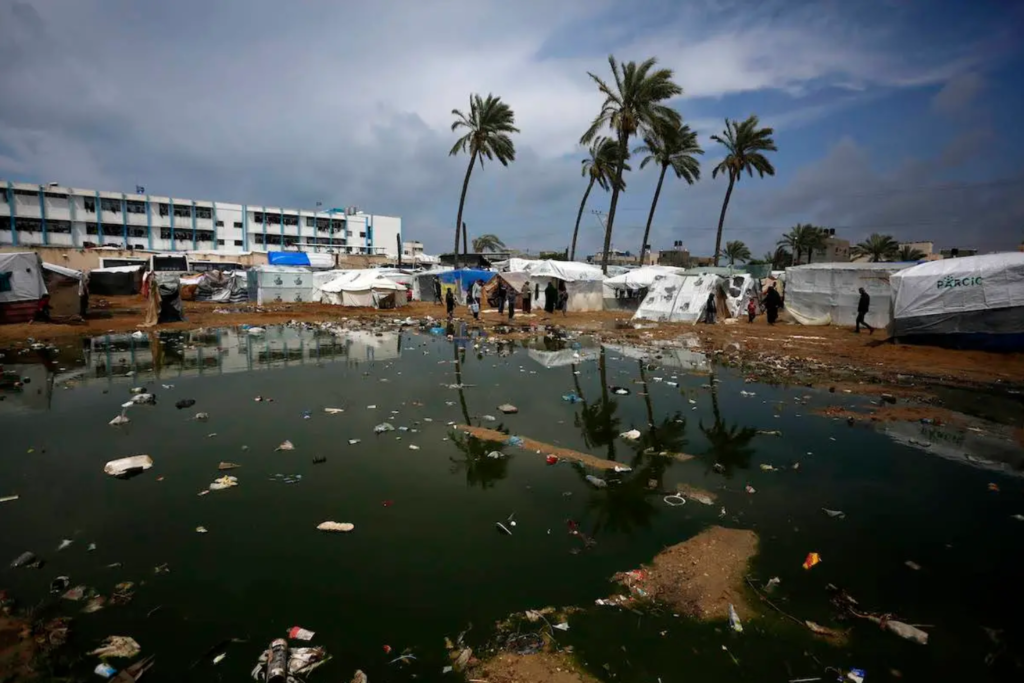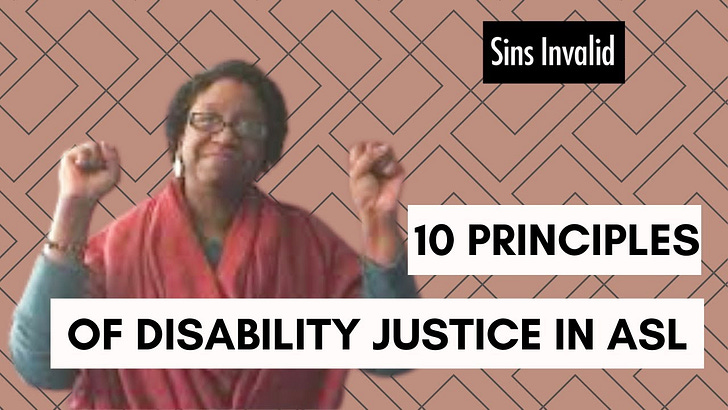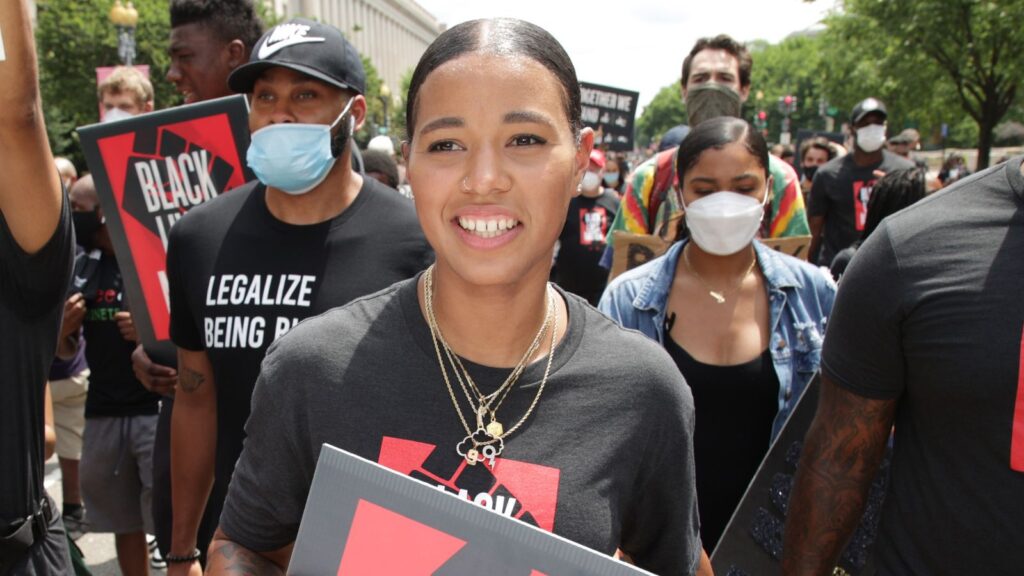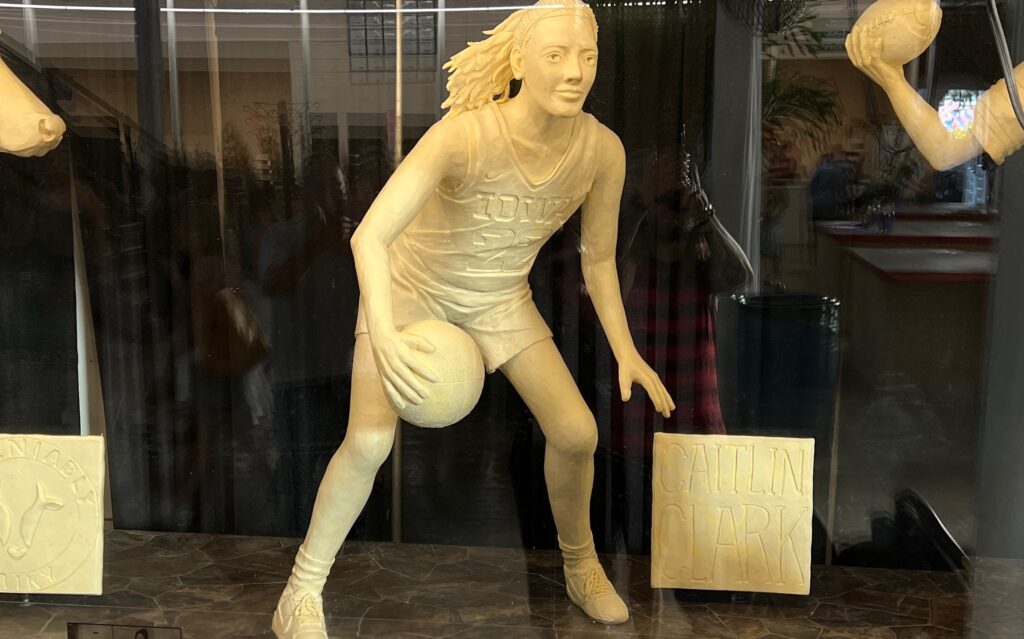Reflections on living with Long COVID for two years
I first tested positive for COVID on June 9, 2022 – exactly two years ago today. That COVID infection turned into Long COVID for me, which I am still living with. In fact, it’s a good thing I had this post mostly ready to go over a week ago, because this weekend I’ve had to stay in bed and cancel plans to see friends because my health is so poor.
Earlier this year, I got a chance to share my Long COVID experience with Meredith Li-Vollmer at the Seattle-King County Public Health Department. Meredith uses comics to educate folks about public health issues, and she portrayed my story in comic form in a fantastic way.
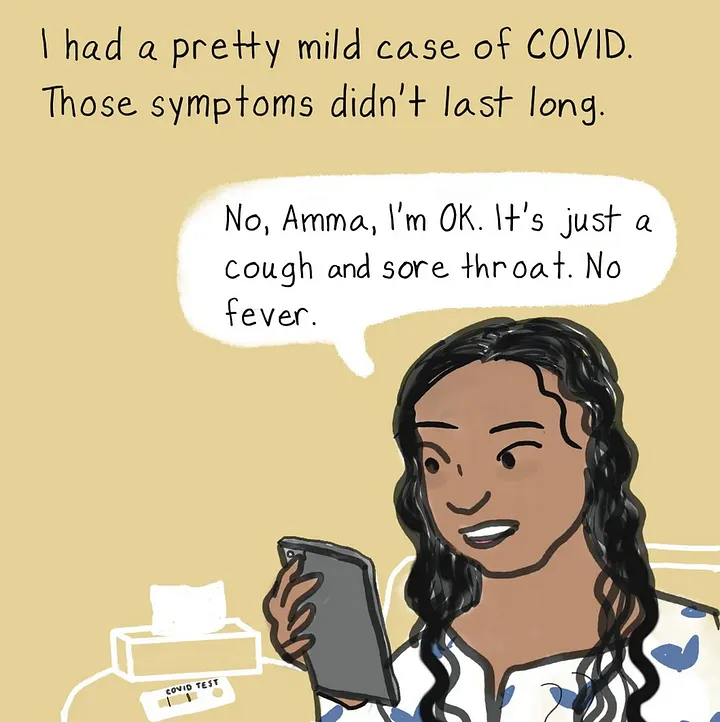
Created by Meredith Li-Vollmer; you can read the full comic at the King County Public Health blog 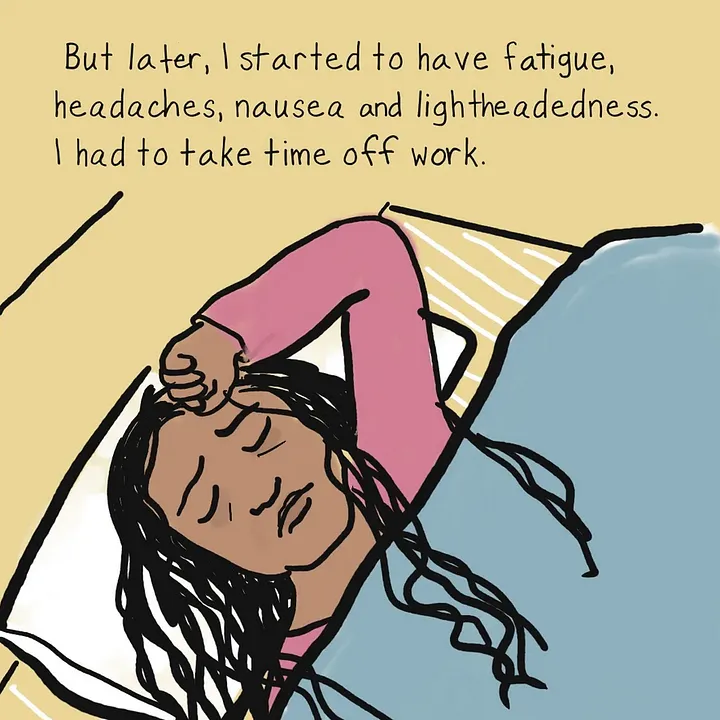
Created by Meredith Li-Vollmer; you can read the full comic at the King County Public Health blog
One thing I really wanted to emphasize in the comic was that despite two years of chronic illness without an end in sight; despite intense fatigue, headaches, nausea, and post-exertional malaise that keep me in bed quite often; despite constant fluctuation in these symptoms as well as the random appearance of new symptoms for certain periods of time; despite having to move back in with my parents for support and cut down to part-time at work – despite all those things, the biggest problem for me isn’t Long COVID in and of itself. I’m learning to deal with my disability, like so many people before me have had to do, and whether or not I will ever return to my pre-Long COVID condition is, frankly, not my biggest concern right now.
No, the biggest problem in my life is that, regardless of what we’ve been told by those in power, the COVID-19 pandemic is still not over.
In 2023, over 75,000 people were reported to have died of COVID in the United States – which is very likely to be a huge under-count because of the dismantling of COVID tracking and testing systems – compared to around 6,000 who died of the flu in the same period. COVID is still the infectious disease that kills the most people in the U.S., and it disproportionately targets those who are already vulnerable, including disabled people and seniors. And as reporter Julia Doubleday has pointed out, 75,000 COVID deaths still is degrees of magnitude higher than deaths from other infectious diseases we’ve worked to eradicate or largely control in the United States at their peak, including diptheria, measles, mumps, pertussis, and polio, even adjusted for present-day population rates. And those are just the deaths: COVID is also a mass disabling event, with around 15% of all U.S. adults (not just those who’ve had COVID) having had Long COVID at some point. The tragic and infuriating part is that we know these impacts are preventable with the right protections, so the fact that we’ve given up on eradicating COVID is unprecedented and appalling.
There are also numerous erroneous beliefs about COVID and Long COVID that contribute to its spread. For one, COVID is not just a respiratory disease – it can impact all the major organ systems, including the brain, heart, kidneys, and immune system. Outdoor transmission, while less likely than getting it indoors, is more of a risk than it was in 2020 as variants kept evolving. Masking does help protect the person wearing the mask (and others around them), but that protection is significantly broader with higher numbers of people masking, so unfortunately one-way masking still puts you at risk of catching COVID. And immunity debt is not a thing for COVID – getting COVID multiple times only damages your immune system and increases your risks of death, hospitalization, and developing Long COVID. Reinfections also worsen Long COVID symptoms for those who already have it.
Then there are the misconceptions about vaccines and immunity – and no, I’m not talking about anti-vaxxer beliefs. It is important to get vaccinated, but getting one set of COVID vaccine shots does not immunize you forever – COVID is mutating so rapidly that each “booster” (which should just be called a new vaccine, as we do with yearly flu shots) is playing catch-up to the most recent COVID strains, so each vaccine’s efficacy starts to wane after about three months. COVID vaccines do also reduce the risk of getting COVID, as well as of developing severe symptoms and Long COVID, but again, you can still develop COVID and Long COVID while vaccinated – or even die, as evidenced by the fact that 42% of the deaths from the Omicron surge in the U.S. in early 2022 were people who were vaccinated. And immunity from a COVID infection itself does not last long either – likely only three to four months.
I’m a prime example of all of these facts. I have been extremely careful through the whole pandemic, even before I got Long COVID: I’m lucky enough to work completely remotely, but I also do relatively few leisure activities in public and mask whenever I do, both indoors and outdoors. And I’ve gotten every COVID vaccine or booster that I’ve been eligible for. I got my first two COVID vaccine shots in April 2021, then my first “booster” in December 2021. Six months later, I had my first COVID infection that developed into Long COVID.
My next “boosters” were in October 2022, May 2023, and October 2023. Despite that, I got COVID for the second time in December 2023, only two months after my last shot (the “bivalent booster”), and that second infection made my Long COVID symptoms significantly worse again after months of progress earlier that year. Then, regardless of any immunity I might have gotten from my second infection, I still got COVID for a third time only three months later in February 2024. After my last two infections, I still have not gotten back to my “normal” level of Long COVID that I had reached in 2023 – which was still pretty debilitating.
This is not to say that you shouldn’t bother to get vaccinated or mask – quite the opposite. My point is that controlling COVID requires multiple tactics combined, not just one, because together they provide the best protection – and what scares me is how much we’ve given up on that multi-pronged approach to the pandemic by pretending that it’s over.
I want to emphasize that the fact that many people think the pandemic is over is a systemic failure and injustice. Institutions of all kinds (governments, health care and public health institutions, businesses, schools, media outlets) and at all levels (international, national, local) have dismantled all the COVID protections that were put in place in the early part of the pandemic – which even then did not go far enough – and they have abandoned us to try and navigate COVID on our own. That’s something that I wish I had stressed more in my conversations with Meredith for the comic – that the problems here are structural, and we need to be fighting for institutional change, including:
But this is my newsletter where I get to talk about my deeper feelings as well (it’s in the name, after all). And while I will continue to emphasize that the pandemic is the fault of governments and other institutions, I also feel betrayed and angry at the fact that individual people – especially people who do know the risks of developing Long COVID – have also dropped their own COVID protections.
To be clear, I’m not talking about vulnerable communities who don’t have access to masks, who can’t avoid large indoor public spaces because they need to be there for work, who don’t have health insurance to get vaccinated, and so on. I’m talking about people like me who do have the privilege to be able to be careful, to continue masking in public spaces (ideally both indoors and outdoors), to decide they can go to fewer restaurants or large public events or leisure trips, to test regularly and isolate completely when they have an infection, to buy HEPA air filters for their homes, and to get their vaccinations when available. So many privileged people have stopped doing those things, and it’s incredibly disheartening.
And for me, the most baffling thing is how people in my own life, who’ve seen exactly how much Long COVID has turned my life upside down, who know intimately how debilitating it is for me, still seem to think of what happened to me as a fluke. After the comic got a lot of attention on Instagram, I received dozens of messages from people that I hadn’t talked to in years, either because of the pandemic in general or because my life has shrunk since getting Long COVID. Old friends and acquaintances were incredibly sympathetic and thanked me for sharing my experience. Many asked how they can support me.
My answer to that is this: the best way to support me is to use COVID protections and fight for more of them from our governments, and to understand that we are all responsible for doing what we can to not only keep from getting it, but to keep from spreading it to others. In fact, I wholeheartedly wish that more people in my life would treat me as a cautionary tale – that they would look at what happened to me not as an unfortunate accident, but rather, as the inevitable outcome of letting a highly-infectious airborne disease run rampant.
And I’ll admit that I’m not perfect with regards to avoiding COVID-risky situations either. I mask everywhere, but once in a while, I’ll make the choice to go to a public event like a women’s soccer or basketball game that is definitely risky even with my masking. I took a trip to India recently to see family for the first time since the pandemic started. Especially in my current very-isolated state, I do make the choice to do some of the few things in public that bring me joy. People who are even more careful than me would be absolutely right in criticizing me for that, and I’m working to minimize those actions.
But that doesn’t invalidate my request to ask others to be more careful too, especially when I know most people in my life are doing far more of those kinds of activities than I am. Nor does me asking for accountability from individual people shift complicity away from our institutions for not doing more to support us. In fact, I think there’s an analogy to be drawn here to how we think about climate action. There are frequent debates within the climate and environmental advocacy worlds about focusing on individual responsibility vs. systemic change. But it doesn’t need to be an either-or. Individual climate action can and does lead to collective action. And some of the things that need to happen at a systemic level will still impact individual action: for instance, there’s just no doubt that those in the global North need to cut down on our flying to reduce our greenhouse gas emissions, and while we fight for our governments to enforce that, it’s still going to impact our own leisure travel.
To me, COVID protections are the same. Our governments should be enforcing things like mask mandates, but if you as an individual can afford masks and don’t have health reasons for not being able to wear them, you should be masking with or without a mandate. The same goes for getting vaccinated, or buying HEPA air filters for your home. Those of us who can afford to do these things have no reason not to, and in the current state of government denial of COVID, we owe it to those who can’t afford to do so, because that’s how public health works. And even if you’re not “perfect” in your efforts to reduce your risk – which, like I mentioned, I’m not – that doesn’t mean you should give up those efforts entirely. Even if you don’t entirely stop going to public events or traveling, reducing those activities is still better than doing nothing. Then you can also pair your individual action with fighting for systemic change, supporting our own communities through mutual aid, mask blocs, and community organizing – here are numerous actions you can take part in to fight for better protections.
Finally, I want to add in a note about the fight for Palestinian liberation, since it is constantly on my mind: in 2020 and 2021, Israel blocked Palestinian access to COVID vaccines, despite the fact that in a pandemic, having more people vaccinated helps everyone, showing how Israel prioritizes cruelty to and the subjugation of Palestinians over even the public health of Israelis. And now, in addition to murdering thousand and thousands of Palestinians with their bombs and ground invasions, they also target hospitals, leading to a complete breakdown of healthcare in Gaza, and force displaced Palestinians into refugee camps where infectious diseases can run rampant. While all this is happening, almost no news reporting acknowledges the increased COVID risk for Palestinians.
Folks who want to be in solidarity with Palestine should care about COVID, and vice versa. Palestinian liberation is a disability justice issue, and disabled organizers are already doing a ton to fight for Palestine. That means we need to ensure pro-Palestine protests and other events are accessible. Things like masking are good for multiple purposes at protests too, since wearing a mask can help protect you from state surveillance.
To keep up on COVID news and find opportunities to fight for change, I recommend subscribing to the following newsletters:
Mutual Aid Request
This newsletter will never be monetized, but I believe that mutual aid is one of the ways we can build community and support the folks who need it the most. If you like my writing, please consider giving; even just a few dollars (or whatever currency you’re paying in) can help.

Today’s request is for my dear friend Regent, a Black and Indigenous queer leader who is battling cancer for the second time. Please help Regent with medical bills and other survival costs if you have the means.

